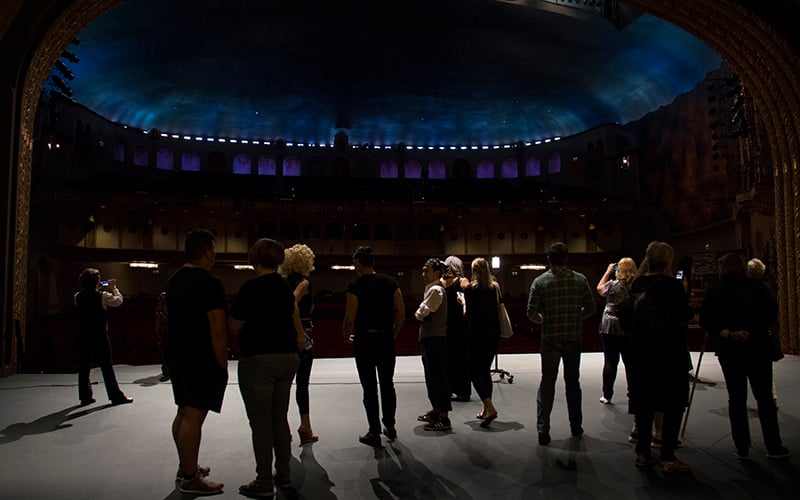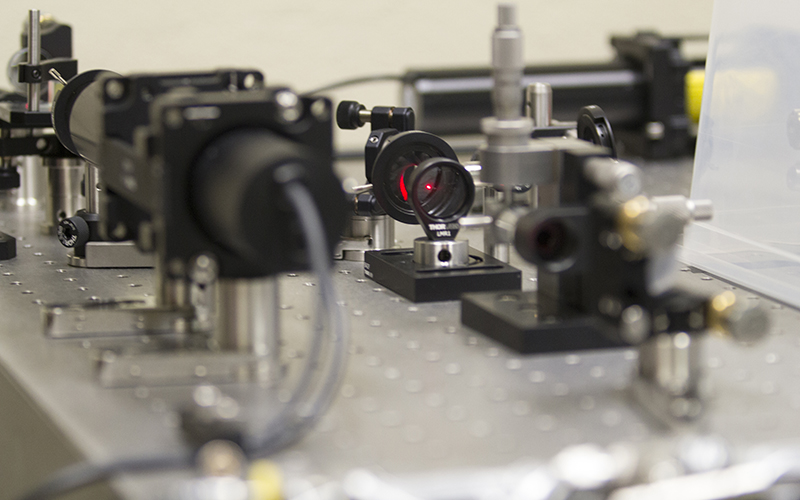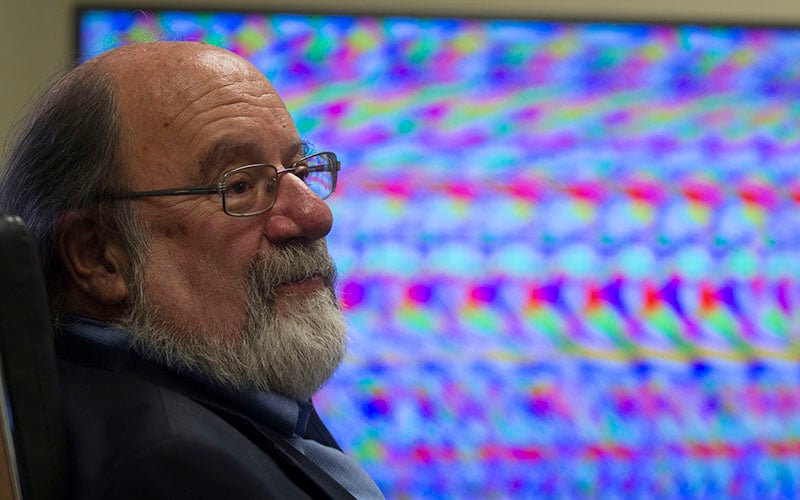TUCSON – One stormy day in November two years ago, water streaked across the second floor windows of the Orpheum Theatre in downtown Phoenix. A security guard snapped a photo with her phone.
When she looked at it, the picture contained the image of a ghostly Native American woman with no makeup and bad teeth, said Patty Dunlap, the volunteer coordinator for the city of Phoenix’s convention center department, which owns and operates the theater.
“I could tell that she had died a violent death in that picture just from looking at it,” Dunlap said. “It was very, very scary. That’s the one thing that made me kind of a believer of the ghost stories. I always thought it was kind of phooey … but I just really did not believe it until I saw that picture.”
When it comes to believing in ghosts, Dunlap is not alone. Thirty two percent of Americans believe in ghosts, according to a 2005 Gallup poll. A more recent Huffington Post/YouGov poll indicated that 45 percent of American adults believe that spirits of dead people can come back.
A mixed group of skeptics and believers recently toured the theater to learn about the ghosts that haunt the building.
‘Belief’ or fact?
“I don’t like the word ‘belief’ because people can believe anything, and very often our beliefs are not true,” said Gary Schwartz, director of the laboratory for advances in consciousness and health at the University of Arizona. “It is not a belief of mine now, that spirits are real. It’s a conclusion that I have come to based on so much evidence that I can no longer, with integrity, dismiss the evidence as untrue.”
Schwartz has been looking into the existence of ghosts for 18 years. He started by testing the authenticity of mediums, people who claim to speak to the deceased. Schwartz studied to be a fake medium himself.
“I am a pretty good fake medium,” he said. “Consequently, I could design research that invalidated the tricks.”
In controlled experiments, Schwartz said he could validate a genuine medium if he or she could provide information about the spirit they were talking to, including intimate details the medium could not research ahead of time. A close family member or friend of the deceased person checked the information.
“Based on the evidence, and I did many experiments … the conclusion I was forced to was, yes, some mediums are real,” he said. “And once you know that some mediums are real, they’re not all fakes and not all frauds, and you can’t explain it by any of our standard conventional ways, you then have to accept the data and follow it where it takes you.”
His research, funded by private entities, led him to the conclusion that ghosts are real, and some people can communicate with them.
Schwartz’s next step was detecting spirits. Since some mediums reported physically seeing spirits, Schwartz hypothesized that they could detect spirits using photons.
In an article published in Explore: The Journal of Science and Healing, Schwartz concluded that it was possible to measure the presence of spirit by an increase in photons in an otherwise black box when a spirit appeared inside the box.
He’s now trying to identify spirits using a method astronomers use to see planets around distant stars. The only way to detect the planets is when they pass in front of the star, blocking its light. In the same way, Schwartz hopes to detect spirits by having them pass their hands through a beam of light. When the spirits’ photons block the light, he can detect the presence of ghosts. So far, he said, the technology is only 70 percent accurate, which is statistically significant but will require further testing.
What about ghosts in real life? According to the Huffington Post/YouGov poll, 28 percent of adults reported having seen or been in the presence of ghosts.
The experience is often the same: You feel a chill down your spine, and the hair on the back of your neck stands on end. You have this strange feeling that someone is standing behind you, but when you turn, there is nothing there. Maybe you see a shadowy form flee from the room.
“Whenever a person has that experience, we can’t tell from the experience per say whether it’s genuine or not, without getting some other corroborating evidence that validates that experience,” Schwartz said. “So sometimes those experiences are not spirit related, they just happen, or they’re wishful thinking, or we get frightened and it’s nothing. But on other occasions, those experiences are actually reflecting moments when we detect the presence of an invisible spirit. And the challenge is for us to be able to discern which are the valid experiences and which ones are not.”
Paranormal attraction
Back at the Orpheum Theatre, people have reported ghosts in the building for many years. The money made from the tours will go to help preserve the theater.
Joe Atredies, who runs the Phoenix Ghost Tours, works with the Friends of the Orpheum Theatre to tease through the history of the building and the reports of the paranormal activities.
“Here at the Orpheum, a lot of the staff and crew have known about a specific ghost that’s very popular and very well known. … Her name is Maddie. The truth is, we actually don’t know who Maddie is,” he said.
And they don’t believe she’s the only ghost there.
The historic theater may be home to several ghostly personalities, including a ghost cat that enjoys playing with computer mice, he said.
“There’s times that something that’s happened, that sounds a little weird but it could be easily explained by other things,” Atredies said. “I do my very best to actually disqualify that it might be something else. Because I think some of the best ghost stories are real ghost stories.”
Atredies didn’t always believe in the paranormal.
“I always knew there was something weird about it, but most of the time I realized it could be explained away,” he said. “It was that 10 percent of the time that I couldn’t find another explanation, and the least craziest one would be ghosts.”
“Sometimes you just gotta say, ‘I’ve seen dead people,'” he said.




